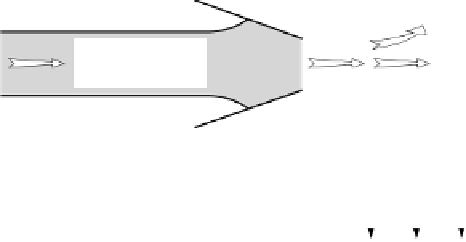Environmental Engineering Reference
In-Depth Information
15.4.2.
Reactive barriers (high permeability)
A reactive barrier with high permeability incorporates chemical and/or biological
reagents or catalysts in the porous environment used to degrade or reduce the
concentrations of pollutants during the passage of subterranean water soiled through
the barrier. This can be a continuous permeable zone or can include tight trench wall
slurry to direct the flow of subterranean water towards the treatment zone. This
approach is known as the “funnel and spoils” system (see Figure 15.2); in this case
the tight walls and reactive walls are locked in the aquifer. This system reduces the
treatment zone compared with what would be necessary for a permeable wall
prolonged throughout the width of the aureole of pollution. The treatment barrier
can also surround the polluted site completely and can be combined with a
conventional approach to containment.
Figure 15.2.
Possible arrangements for permeable reactive barriers using the
“funnel and spoils” system [MIT 96]
With the difference between reactive barriers with low permeability - in which
diffusion is probably the principal mechanism of transport - advection should be the
dominant mechanism for reactive barriers with high permeability. Their design
requires that we take into account several important hydraulic factors.



























































